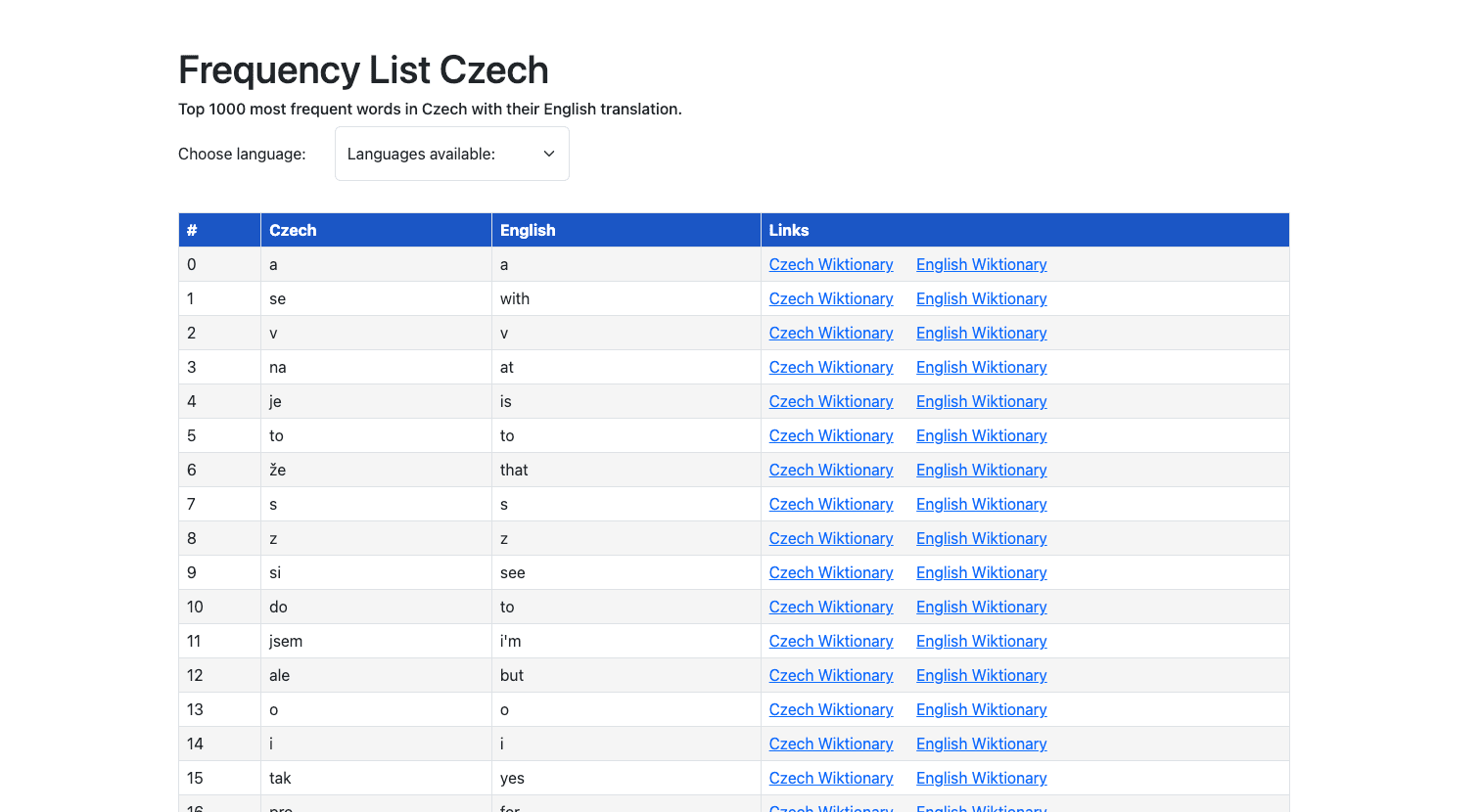
Powerful Word Frequency Lists for Foreign Language Learning
Whenever you start learning a new language, you will be confronted with the question of how to learn vocabulary. There are many different approaches to this problem, but one of the most popular is to learn the most common words first. Using my powerful word frequency lists, you can learn the most common words in a foreign language quickly and efficiently.
What are Word Frequency Lists?
In computational linguistics, word frequency lists are lists of words that are ordered by their frequency of occurrence in a given text corpus. In foreign language learning, these lists aid in the purpose of vocabulary acquisition. Since you learn the words first that are used more frequently, you can understand the foreign language better and faster.
Also, the learner will memorize the words more easily, since they are used more frequently.
Blue-wordfreq
I have created a Python application called blue-wordfreq that allows you to easily create word frequency lists for many languages.
Currently, the following languages are supported: Spanish, French, Czech, Swedish, Mandarin, Greek and Romanian.
It is based on the wordfreq Python package by Luminoso Technologies, Inc. and uses the same data sources.
The blue-wordfreq Python application also translates the words using DeepL, so you can easily learn the words in your native language.
There is another application written in Go that takes these translated word frequency lists and creates an HTML website with the words. In this website, there are also links included to the Wiktionary entry of the word in both the English language Wiktionary and the Wiktionary of the language you are learning. Wiktionary is a multilingual, web-based project to create a free content dictionary of all words in all languages.
The final result of the website looks like this:

You can access the final website here:
https://blue-wordfreq.netlify.app/
Tech Stack
The blue-wordfreq Python application is written in Python and uses the following libraries:
wordfreqby Luminoso Technologies, Inc.deepl, the official DeepL API client for Python by DeepL GmbH
The converter.go application is written in Go and uses the following library:
html/template: template for creating the HTML website
You can find the source code of the blue-wordfreq Python application on GitHub:
https://github.com/tderflinger/blue-wordfreq
Conclusion
I hope you could see that word frequency lists are easily generated using open source software. You can use these lists to learn the most common words in a foreign language and thus improve your language skills.
By the way, your feedback to this project is always very welcome!
References
-
blue-wordfreq: https://blue-wordfreq.netlify.app/
-
blue-wordfreq soure code: https://github.com/tderflinger/blue-wordfreq
-
wordfreq: https://github.com/rspeer/wordfreq
-
deepl: https://pypi.org/project/deepl/
-
html/template: https://pkg.go.dev/html/template
Cover image by DALLE-2 with prompt "Letters 'word frequency' scattered in the air, colorful"
Published
10 Feb 2023
